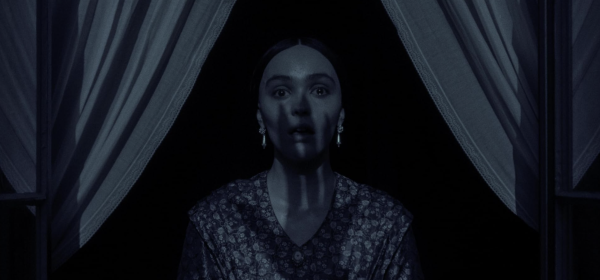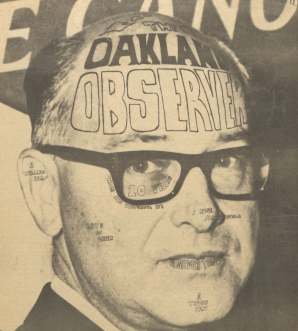Waits harbors passion for children
Catherine Waits walks into a fourth grade classroom. She is drawn to a child having a meltdown. The teacher is not trained to handle a situation such as this, so Catherine walks to the child, sits down next to him and negotiates with him. After talking to Waits, the boy stands up and returns to his normal activities. As Waits gets up, the teachers stand aside themselves, baffled. What they could not do, Catherine could.
Waits, a senior pursuing an early childhood degree, works at West Bloomfield Public Schools, helping children who suffer from Autism Spectrum Disorder. Catherine works with children from preschool to fifth grade, offering assistance to help them get through their days.
“She has a great sense of commitment toward her children and it can be seen by others,” said Amanda Segal, a Doherty Elementary School teacher and a co-worker of Catherine. “She (Catherine) is a natural when it comes to working with kids. She loves them and they love her.”
Waits became involved in the autism field through an internship that was required for her early childhood degree. Waits took up the suggestion of her boss, to work with a child (who was believed to have autism) that required 1-on-1 attention. For Catherine, there was a learning curve.
“One of the difficulties I learned at first was that I didn’t know what I was learning,” Waits said. “I watched the children, studied them and asked questions to people who had more experience with children with autism (than myself).”
By asking questions, Waits was able to find out a common issue that children with autism have.
“General autism has a lot of sensory issues,” Waits said. “Like a child taking his or her shoe off, parents don’t understand why they’re doing it, they just think that they’re being bad kids.”
Sensory issues vary by the person. For instance, a child might not like loud noise so he or she covers their ears to reduce the volume. Another example is if a child’s eyes are sensitive to light; a child might wear a pair of sunglasses or protective eyewear to reduce the brightness emitted from the light.
Waits was also able to learn the social disadvantages children with autism have.
“A lot of the negative in autism stems from the lack of social skills,” Waits said. “The children that I work with, because of their age, do not know social cues.”
Segal said she notices the special attention that could be needed for children with autism.
“I’ve had a child with autism in my class,” Segal said. “He had difficulty with the class routine, making appropriate decisions and interacting with his peers.”
Some children who have autism prefer to explain their feelings and requests through pointing at pictures rather than explaining themselves verbally.
Catherine was influenced to work in the autism field because of the progress she saw in a boy who preferred explaining himself through pointing and pictures.
“At the beginning of the year he had to have his notebook, and would cry,” Waits said. “By the end of the year, he was able to interact with his peers and say what he needed or where he needed to go. He was happy.”
Now with experience, Waits believes that people with autism have an important role in society.
“The way people with autism see the world is so different from how we see it,” Waits said. “They look at the world so uniquely and differently… they’re going to be the ones that come up with cures for all of the ailments someday.”
Children that have autism, have specific interests in which they like to study more about. “I can go into a car and they can tell me what pieces go into the car,” Waits said.
Taking four courses this semester while holding a career, Waits said that this would not be possible without an understanding employer.
“My boss is willing to work around my schedule and gives me Tuesday and Thursday off,” Waits said. “I work on Monday, Wednesday,and Friday.”
At first, Waits said was a judgmental person who would look at people and say, “what is wrong with that person.” Today, with the knowledge of autism, Waits said she believes that people should not be quick to judge, like she was.
“They’re not bad kids,” Waits said. “When you’re out somewhere and you see someone acting different, don’t say, ‘what is wrong with that kid,’ wonder if the child is alright.”
ASD affects one in every 110 children born. The ratio continues to shrink and while there is no cure, treatments and therapy exist. To learn more about ASD and those it affects, visit www.autismspeaks.org







